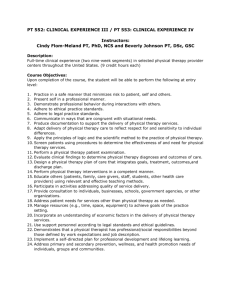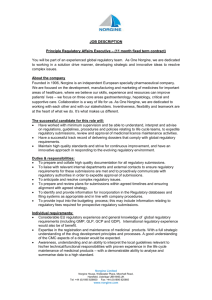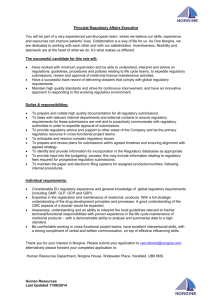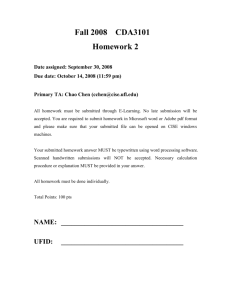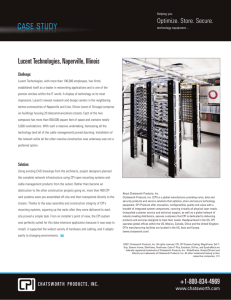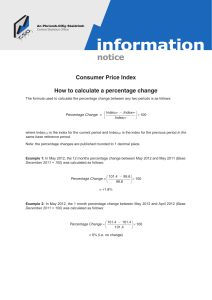CPI working papers guideline
advertisement
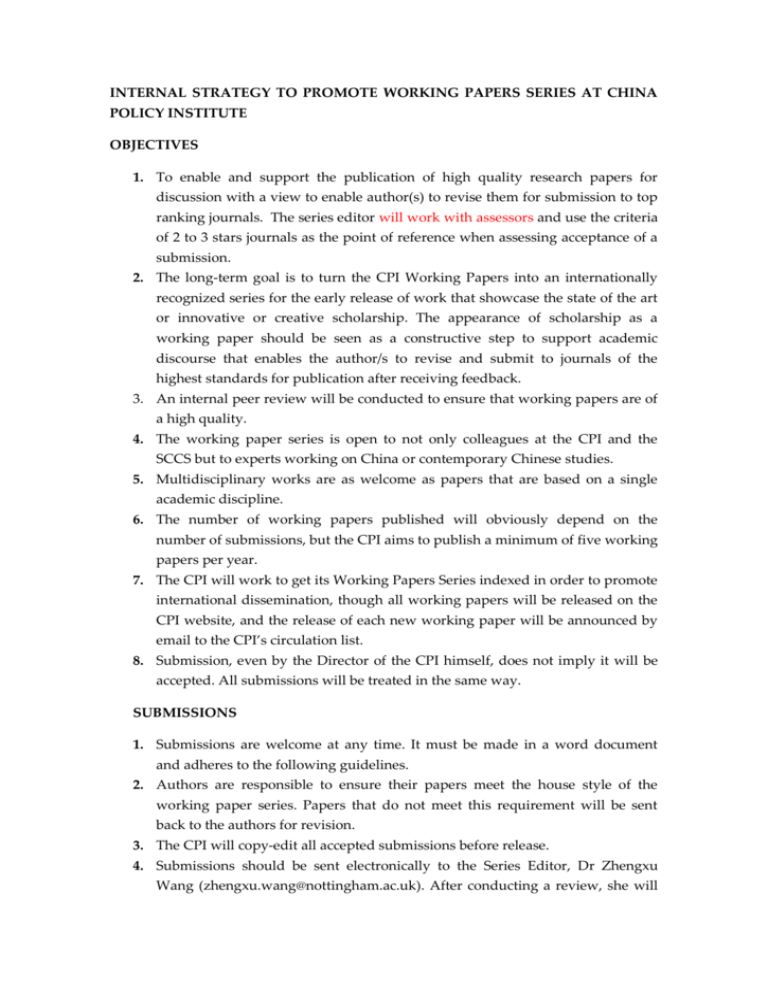
INTERNAL STRATEGY TO PROMOTE WORKING PAPERS SERIES AT CHINA POLICY INSTITUTE OBJECTIVES 1. To enable and support the publication of high quality research papers for discussion with a view to enable author(s) to revise them for submission to top ranking journals. The series editor will work with assessors and use the criteria of 2 to 3 stars journals as the point of reference when assessing acceptance of a submission. 2. The long-term goal is to turn the CPI Working Papers into an internationally recognized series for the early release of work that showcase the state of the art or innovative or creative scholarship. The appearance of scholarship as a working paper should be seen as a constructive step to support academic discourse that enables the author/s to revise and submit to journals of the highest standards for publication after receiving feedback. 3. An internal peer review will be conducted to ensure that working papers are of a high quality. 4. The working paper series is open to not only colleagues at the CPI and the SCCS but to experts working on China or contemporary Chinese studies. 5. Multidisciplinary works are as welcome as papers that are based on a single academic discipline. 6. The number of working papers published will obviously depend on the number of submissions, but the CPI aims to publish a minimum of five working papers per year. 7. The CPI will work to get its Working Papers Series indexed in order to promote international dissemination, though all working papers will be released on the CPI website, and the release of each new working paper will be announced by email to the CPI’s circulation list. 8. Submission, even by the Director of the CPI himself, does not imply it will be accepted. All submissions will be treated in the same way. SUBMISSIONS 1. Submissions are welcome at any time. It must be made in a word document and adheres to the following guidelines. 2. Authors are responsible to ensure their papers meet the house style of the working paper series. Papers that do not meet this requirement will be sent back to the authors for revision. 3. The CPI will copy-edit all accepted submissions before release. 4. Submissions should be sent electronically to the Series Editor, Dr Zhengxu Wang (zhengxu.wang@nottingham.ac.uk). After conducting a review, she will inform the author or the lead author the decision and suggest revisions as appropriate. 5. A mock template is attached for reference. Working Paper style: Length: In light of the multi-disciplinary nature, working papers can range from 5,00012,000 words, including references and notes. Title: Calibria, size 18, centered. Heading Abstract: Calibria, size 18, centered. Abstract: Up to 200 words. Font: Palatino Linotype, 10. Single space. Keywords: Up to 4 Author’s name and affiliation. Body of the text: Palatino Linotype, 11, normal for the body of the text, 1.15 spaces. Bold for headings. Table Style: Located in the body of the text following the below format. Table X: Options Option a Option b Option c Option d Notes: Sources: Graph Style: Close to this one located in the body in the text, and with high quality, following the below format. Figure 2: Energy use (right) and GDP (left) 15.00 31.00 30.50 14.50 30.00 29.50 14.00 29.00 13.50 28.50 28.00 13.00 27.50 Energy use (kt of oil equivalent, log) 2007 2005 2003 2001 1999 1997 1995 1993 1991 1989 1987 1985 1983 1981 1979 1977 1975 1973 27.00 1971 12.50 GDP (constant LCU, log) Source: World Bank and own elaboration References Style References should follow the Harvard system: The Harvard system uses the name of the author, the date of publication and, following quoted material, the page reference as a key to the full bibliographical details set out in a list of References, which should include (in alphabetical order by author) every work cited in the text. Where there are two or more works by one author in the same year, these should be distinguished by using 2000a, 2000b, and so on. Authors are asked to ensure that dates, spelling and titles are used in the References are consistent with those listed in the text. The following are examples: For monographs Hawawini, G., Swary, I., 1990. Mergers and Acquisitions in the U.S. Banking Industry: Evidence from the Capital Markets. North-Holland, Amsterdam. For contributions to collective works Brunner, K., Meltzer, A.H., 1990. Money supply, in: Friedman, B.M., Hahn, F.H. (Eds.), Handbook of Monetary Economics, Vol. 1. NorthHolland, Amsterdam, pp. 357-396. For periodicals Griffiths, W., Judge, G., 1992. Testing and estimating location vectors when the error covariance matrix is unknown. Journal of Econometrics 54, 121--138. Newspaper citation Regen, Phil. "The Reign of the Tiger." The Daily Herald [Chicago] 5 May 2004, 2nd edition: 12+. Magazine citation Gordon, Matt. "The New Ferrari." Car and Driver 8 May 2005: 17-20. Online sources Cornell University Library. "Introduction to Research." Cornell University Library. Cornell University, 2009. Web. 19 June 2009 <http://www.library.cornell.edu/resrch/intro>. Chinese names may be listed in the references with the surname first, as follows: Liu Y.H., Chew S.B., and Li W.Z., Education, experience and productivity of labor in China's township and village enterprises: The case of Jiangsu province, China Economic Review 9, 47-58. Footnotes: They should be included in the main body of the text, not at the end. Acknowledgements: They should be included at the end of the manuscript after conclusions. Spelling: British spelling is preferred but American spelling is acceptable provided it is used consistently all through the paper. Appendix: Located after the references





